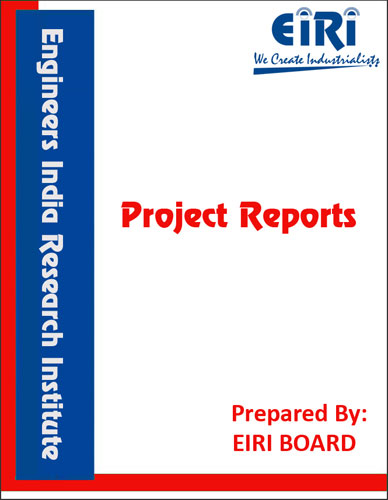MUSTARD OIL EXTRACTION & REFINING PLANT
The project report includes Present Market Position and Expected Future Demand, Market Size, Statistics, Trends, SWOT Analysis and Forecasts. Report provides a comprehensive analysis from industry covering detailed reporting and evaluates the position of the industry by providing insights to the SWOT analysis of the industry.
We can prepare PROJECT REPORT as per your INVESTMENT PLAN for BANK LOAN REQUIREMENT and INDUSTRY ANALYSIS. All reports are prepared by highly qualified consultants and verified by a panel of experts.
Have Query? Click Here to Chat
Industry Expert is Online, Chat with him for more detail.

Indian Edible Oil Industry Vegetable oil and oil seeds are two of the essential commodities for the consumer’s daily needs. India is one of the largest producers of oilseeds in the world with an area of 26.54 million hectares under cultivation producing 23-28 million tonnes of oil seeds every year depending on the monsoons. It produces nine types of oil seeds namely, Groundnut, Soybean, Rape/Mustard seed, Sunflower seed, Sesame seed, Castor seed, Niger seed, Safflower seed, Linseed. It also enjoys the position of being the third largest consumer of edible oil in the world next only to US and China owing to its growing population, rising income levels and changing eating habits.
The per capita consumption has grown by 8.1 per cent over the last five years. It stood at 12.5 kg/person per annum which is considerably low as compared to the world average of 17.5 kg/ annum. Developed countries like Japan, Brazil and USA consume around 20.8 kg/annum, 21.3 kg/annum and 48.0 kg/annum respectively. The imports mainly comprise Palm oil, Soybean oil and Sunflower oil. Indonesia, Argentina and Malaysia are the key exporters of oil to India. Olive oil is mainly imported from European countries like Italy and Spain. Rapeseed oil is imported from UAE.
While mustard seeds are abundantly produced in most parts of India, its milling/grinding is mostly done by the large centralized plants, which have the advantage of high efficiency and reduced costs due to economies of scale. Despite the clear advantage of large plants, the importance of tiny decentralized oil extraction units cannot be discounted as they also prove to be economic and present opportunities for self- employment in situations:
where oil produced by large plants do not find its way to remote and distant places because of high transportation costs involved in wider distribution and in places where there is no oil expeller in the area and the farmers sell oil seeds to large refineries which they then buy back at high cost in the form of cooking oil but without the valuable high protein oil cake.
• INTRODUCTION
• VARIETIES OF MUSTARD SEED
• FATTY ACID COMPOSITION OF MUSTARD OIL MUSTARD OIL
• (FROM BLACK MUSTARD SEED)
• MUSTARD OIL (FROM WHITE MUSTARD SEDDS
• PHYSICO-CHEMICAL CHARACTERISTIC
• USES AND APPLICATIONS
• MUSTARD OIL PROPERTIES
• MARKET SURVEY
• FEATURES
• MANUFACTURING PROCESS
• MANUFACTURING PROCESS
• MANUFACTURERS AND EPORTERS OF MUSTARD OILS
• PLANT LOCATION FACTORS
• EXPLANATION OF TERMS USED IN THE PROJECT REPORT
• GENERAL PLANT LAYOUT
• OTHER MISCELENEOUS ACTIVITIES
• STANDARDS
• EQUIPMENT REQUIREMENT
• LIST OF FOOD AND AGRO PROCESSING CONSULTANTS
• IMPLEMENTATION SCHEDULE
• SUPPLIERS OF OIL EXPELLERS MACHINERY
• SUPPLIERS OF RAW MATERIALS
• STANDARDS APPLICABLE FOR STORAGE OF MUSTARD
• STANDARDS APPLICABLE FOR DOMESTIC MARKET
• SAFETY PARAMETERS
• STANDARDS FOR GRADING
• STANDARDS APPLICABLE FOR INTERNTIONAL TRADE.
• COMPLETE PLANT AND MACHINERY SUPPLIERS FOR SOLVENT EXTRACTION PLANT
• LIST OF FOREIGN MANUFACTURER/ SUPPLIER OF PLANT AND MACHINERY
• SUPPLIERS OF PLANT AND MACHINERY
• HEAT RECOVERY SECTION (BOTTOM TRAY)
• PLANT LAYOUT
APPENDIX –A
01. PLANT ECONOMICS
02. LAND & BUILDING
03. PLANT AND MACHINERY
04. OTHER FIXED ASSESTS
05. FIXED CAPITAL
06. RAW MATERIAL
07. SALARY AND WAGES
08. UTILITIES AND OVERHEADS
09. TOTAL WORKING CAPITAL
10. TOTAL CAPITAL INVESTMENT
11. COST OF PRODUCTION
12. TURN OVER/ANNUM
13. BREAK EVEN POINT
14. RESOURCES FOR FINANCE
15. INSTALMENT PAYABLE IN 5 YEARS
16. DEPRECIATION CHART FOR 5 YEARS
17. PROFIT ANALYSIS FOR 5 YEARS
18. PROJECTED BALANCE SHEET FOR (5 YEARS)



